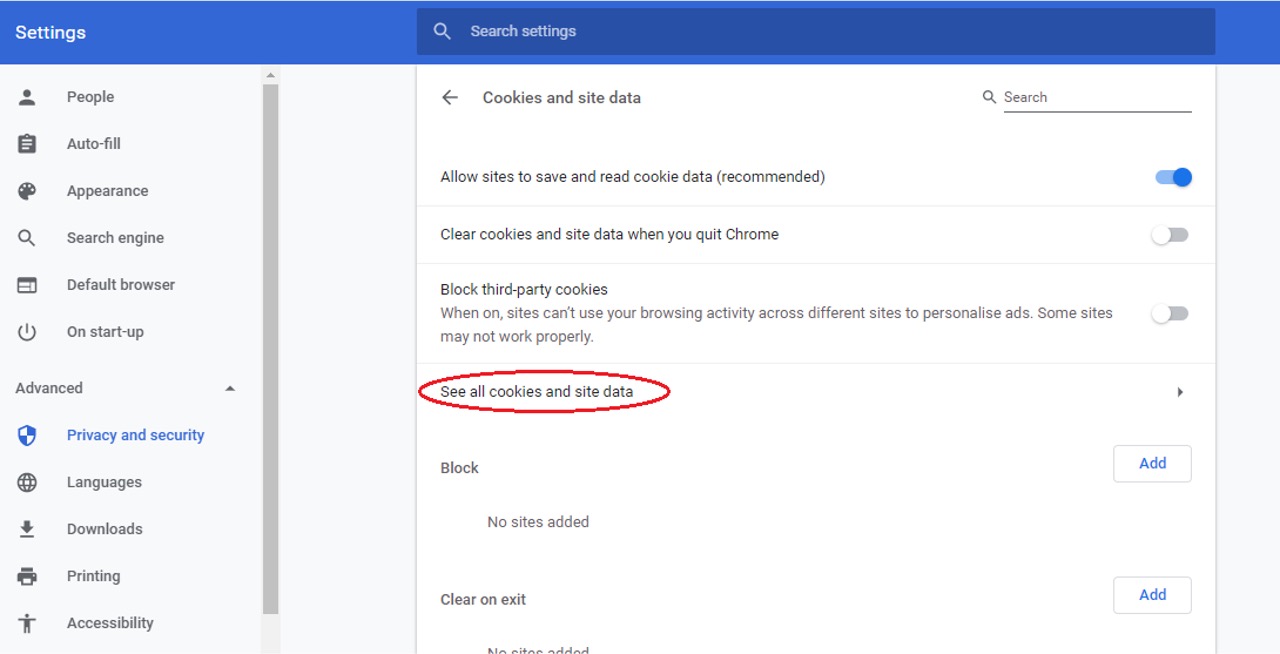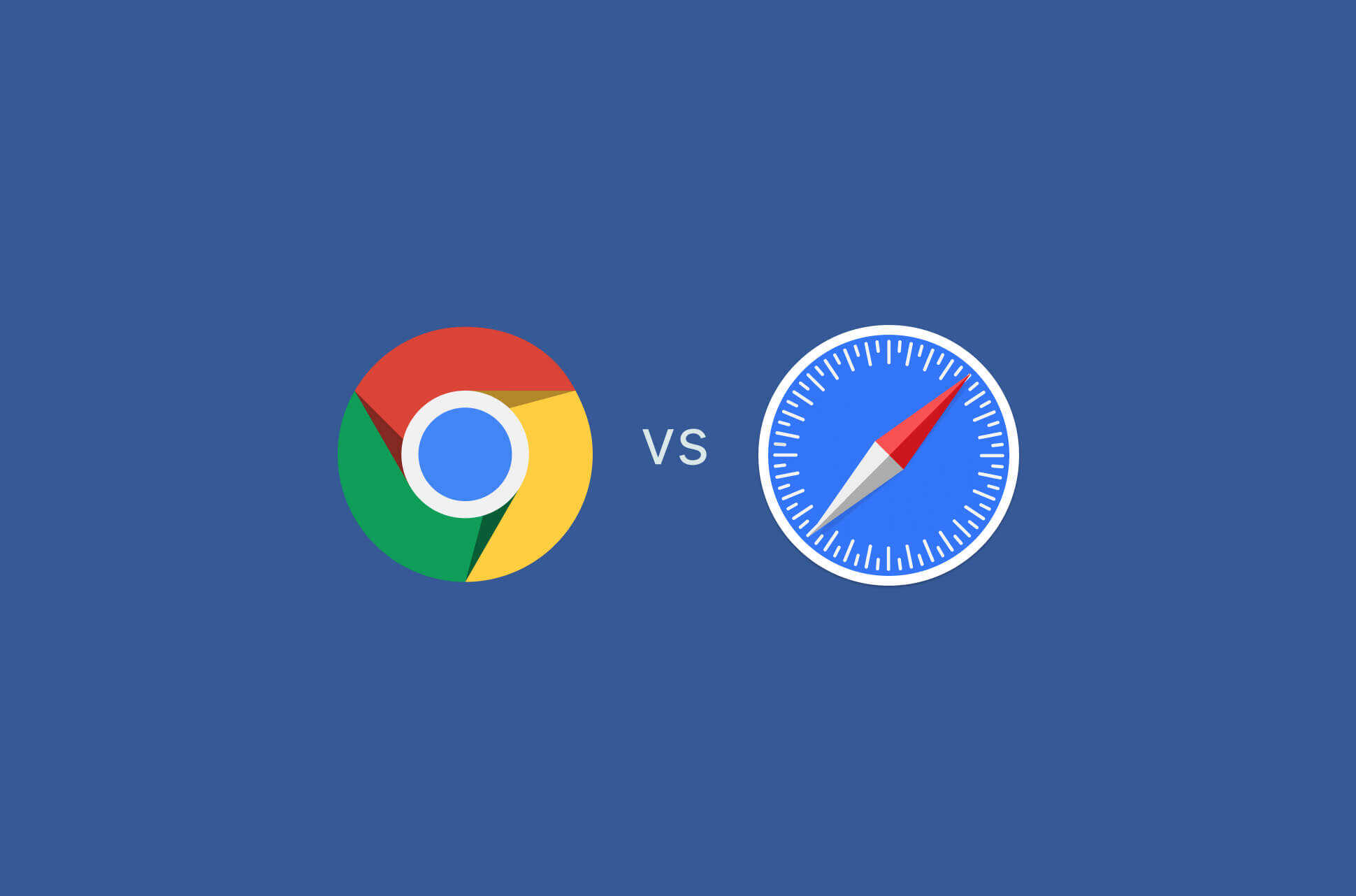Introduction
In today's digital age, web browsers have become an integral part of our daily lives, serving as gateways to a wealth of information and resources. Chrome, one of the most popular browsers, offers a seamless and feature-rich browsing experience. However, as we immerse ourselves in the vast expanse of the internet, it's crucial to be aware of the various mechanisms that underpin our online activities, including the concept of cross-website tracking.
Cross-website tracking, a pervasive practice in the digital realm, involves the monitoring of users' online behavior across multiple websites. This process enables entities such as advertisers and data analytics firms to create comprehensive profiles of individuals, encompassing their preferences, interests, and browsing habits. While this may seem innocuous on the surface, the implications of cross-website tracking are far-reaching and merit careful consideration.
As we delve into the intricacies of cross-website tracking in Chrome, it's essential to understand its mechanisms, implications, and, most importantly, how users can safeguard their privacy and browsing experience. By shedding light on this topic, we aim to empower individuals with the knowledge needed to make informed decisions about their online interactions and privacy. Let's embark on a journey to unravel the nuances of cross-website tracking and explore the measures that can be taken to mitigate its impact.
What is Cross Website Tracking?
Cross-website tracking, also known as cross-site tracking, refers to the practice of monitoring and recording users' online activities as they navigate across different websites. This process involves the use of various technologies, such as cookies, web beacons, and tracking scripts, to collect and aggregate data about an individual's browsing behavior, preferences, and interactions with online content.
At its core, cross-website tracking enables entities, such as advertising networks, data brokers, and analytics firms, to create detailed profiles of users based on their internet activities. These profiles encompass a wide array of information, including the websites visited, products viewed, searches conducted, and even the duration of time spent on specific pages. By amalgamating this data from disparate sources, these entities can construct comprehensive user profiles that offer insights into individuals' interests, behaviors, and potential purchasing intentions.
The proliferation of cross-website tracking has been fueled by the widespread adoption of online advertising and the quest for targeted marketing strategies. By leveraging the data gleaned from cross-website tracking, advertisers can tailor their campaigns to align with users' preferences and behaviors, thereby enhancing the relevance and effectiveness of their promotional efforts.
However, the pervasive nature of cross-website tracking has raised concerns about user privacy, data security, and the potential for exploitation of personal information. As users traverse the digital landscape, their online footprints are meticulously traced, often without their explicit consent or awareness. This has prompted discussions about the ethical implications of cross-website tracking and the need for greater transparency and user control over data collection practices.
In essence, cross-website tracking represents a fundamental aspect of the contemporary digital ecosystem, shaping the dynamics of online advertising, user profiling, and data-driven decision-making. Understanding the mechanisms and implications of cross-website tracking is pivotal in empowering individuals to navigate the digital realm with heightened awareness and agency over their online privacy and data footprint.
How Does Cross Website Tracking Work in Chrome?
Cross-website tracking operates within Chrome through a combination of technologies and data collection methods that enable the seamless monitoring of users' online activities across diverse websites. At the core of this process are cookies, small pieces of data stored in users' browsers, which serve as identifiers and repositories of user-specific information. When a user visits a website, Chrome allows the site to store cookies on the user's device, facilitating the retention of session data, preferences, and other relevant information.
In the context of cross-website tracking, these cookies play a pivotal role in facilitating the transmission of user data across different websites. As users navigate from one site to another, these cookies enable the seamless transfer of information, allowing entities to track and aggregate users' browsing behavior and interactions with online content. This interconnected web of data collection enables advertisers and analytics firms to construct comprehensive user profiles, encompassing a myriad of online activities and preferences.
Furthermore, Chrome supports the use of third-party cookies, which are employed by entities other than the website being visited. This mechanism enables cross-website tracking by allowing third-party entities, such as advertising networks and data brokers, to embed tracking cookies across multiple websites, thereby extending their reach and data collection capabilities. As a result, users' online activities and behaviors can be monitored and collated across a broad spectrum of websites, contributing to the creation of detailed user profiles.
In addition to cookies, Chrome also facilitates cross-website tracking through the utilization of web beacons, also known as tracking pixels. These are tiny, transparent images embedded in web pages, often in conjunction with cookies, to track user interactions and gather data about their browsing habits. When a user loads a web page containing a web beacon, information such as the user's IP address, browser type, and the time the page was accessed, is transmitted to the server hosting the beacon, thereby contributing to the aggregation of user data for tracking and profiling purposes.
Moreover, Chrome's support for JavaScript and other web technologies enables the execution of tracking scripts that can capture and transmit user data across websites. These scripts, often embedded within web pages, facilitate the collection of diverse information, including user interactions, form submissions, and page views, thereby enriching the pool of data available for cross-website tracking and user profiling.
In essence, the seamless integration of cookies, web beacons, and tracking scripts within Chrome's framework enables the intricate web of cross-website tracking to operate, allowing entities to monitor and aggregate users' online activities across multiple websites. This comprehensive data collection underpins the creation of detailed user profiles, shaping the landscape of targeted advertising, user analytics, and data-driven decision-making within the digital realm.
Implications of Cross Website Tracking
The implications of cross-website tracking extend far beyond the realms of targeted advertising and user profiling, permeating various facets of the digital landscape and user experience. At the forefront of these implications is the profound impact on user privacy and data security. As users traverse the internet, their online activities, preferences, and behaviors are meticulously monitored and aggregated, often without their explicit consent or awareness. This surreptitious data collection raises concerns about the erosion of individual privacy and the potential for unauthorized access to personal information.
Furthermore, the extensive profiling facilitated by cross-website tracking engenders a sense of unease regarding the commodification of user data. The detailed user profiles constructed through cross-website tracking serve as valuable assets for advertisers, data brokers, and analytics firms, shaping the landscape of targeted marketing and user engagement. However, this commodification of user data raises ethical questions about the ownership and control of personal information, prompting discussions about the need for greater transparency and user autonomy in data collection practices.
Moreover, the prevalence of cross-website tracking underscores the challenges associated with data security and the potential for data breaches. The aggregation of vast amounts of user data across disparate websites creates a fertile ground for security vulnerabilities and the unauthorized access to sensitive information. This not only jeopardizes individual privacy but also poses risks to data integrity and confidentiality, necessitating robust measures to safeguard user data from exploitation and unauthorized access.
Additionally, the pervasive nature of cross-website tracking has implications for user autonomy and online freedom. As users navigate the digital landscape, their online experiences are shaped by the targeted content, personalized recommendations, and tailored advertisements derived from cross-website tracking. While this may enhance the relevance and appeal of online content, it also raises concerns about the potential for algorithmic manipulation and the restriction of diverse perspectives, underscoring the need to strike a balance between personalization and user autonomy.
Furthermore, the implications of cross-website tracking extend to regulatory and legislative domains, prompting discussions about the need for comprehensive data protection frameworks and privacy regulations. The ethical, legal, and societal implications of cross-website tracking have spurred initiatives aimed at enhancing user privacy rights, fostering transparency in data collection practices, and mitigating the risks associated with extensive user profiling.
In essence, the implications of cross-website tracking resonate across privacy, data security, user autonomy, and regulatory domains, underscoring the need for informed discourse, ethical considerations, and proactive measures to safeguard user privacy and data integrity in the digital age.
How to Prevent Cross Website Tracking in Chrome
Preventing cross-website tracking in Chrome necessitates a proactive approach to safeguarding user privacy and mitigating the pervasive data collection practices that underpin cross-website tracking. Chrome offers a range of built-in features and settings that empower users to exert greater control over their online privacy and limit the extent to which cross-website tracking can impact their browsing experience.
1. Utilize Chrome's Privacy Settings
Chrome provides users with granular control over their privacy settings, enabling them to manage cookies, site data, and permissions. By accessing the Privacy and Security section within Chrome's settings, users can customize their preferences regarding cookies, opting to block third-party cookies and clear browsing data regularly. Additionally, Chrome offers the option to block or allow specific sites to set cookies, affording users greater autonomy over their data collection preferences.
2. Enable 'Do Not Track' Requests
Chrome features a 'Do Not Track' (DNT) request setting that signals to websites and third-party trackers the user's preference not to be tracked. By enabling this setting within Chrome's privacy options, users can convey their intent to abstain from cross-website tracking, encouraging websites and tracking entities to respect their privacy preferences.
3. Install Privacy-Focused Extensions
Chrome's extensive library of extensions includes privacy-focused tools that can augment the browser's built-in privacy features. Ad-blocking extensions, tracker blockers, and privacy-enhancing add-ons can fortify users' defenses against cross-website tracking, offering enhanced control over the types of content and tracking mechanisms permitted during browsing sessions.
4. Regularly Update Chrome and Extensions
Keeping Chrome and its extensions up to date is crucial for ensuring that users benefit from the latest security enhancements and privacy features. Regular updates can address vulnerabilities that may be exploited for cross-website tracking purposes, bolstering the overall resilience of the browser against intrusive data collection practices.
5. Consider Private Browsing Modes
Chrome's incognito mode, or private browsing, offers a temporary session that does not retain browsing history, cookies, or site data. While not a foolproof solution for preventing all forms of tracking, utilizing incognito mode can mitigate the persistence of tracking cookies and data accumulation across browsing sessions, enhancing user privacy during sensitive or private browsing activities.
By leveraging these strategies and features within Chrome, users can proactively mitigate the impact of cross-website tracking, fortify their online privacy, and assert greater control over their digital footprint. Empowering users with the knowledge and tools to navigate the digital landscape with heightened privacy awareness is pivotal in fostering a more secure and privacy-centric browsing experience within Chrome.
























